
Oklahoma City, officially the City of Oklahoma City, and often shortened to OKC, is the capital and most populous city of the U.S. state of Oklahoma. The county seat of Oklahoma County, it ranks 20th among United States cities in population, and is the 8th largest city in the Southern United States. The population grew following the 2010 census and reached 681,054 in the 2020 census. The Oklahoma City metropolitan area had a population of 1,396,445, and the Oklahoma City–Shawnee Combined Statistical Area had a population of 1,469,124, making it Oklahoma's largest municipality and metropolitan area by population.

Marion is a city in and the county seat of Perry County, Alabama, United States. As of the 2010 census, the population of the city is 3,686, up 4.8% over 2000. First known as Muckle Ridge, the city was renamed for a hero of the American Revolution, Francis Marion.

In the American Civil War (1861–65), the border states were slave states that did not secede from the Union. They were Delaware, Maryland, Kentucky, and Missouri, and after 1863, the new state of West Virginia. To their north they bordered free states of the Union, and all but Delaware bordered slave states of the Confederacy to their south.
The history of Oklahoma City refers to the history of city of Oklahoma City, and the land on which it developed. Oklahoma City's history begins with the settlement of "unassigned lands" in the region in the 1880s, and continues with the city's development through statehood, World War I and the Oklahoma City bombing.

Mount Olivet Cemetery is a 206-acre (83 ha) cemetery located in Nashville, Tennessee. It is located approximately two miles East of downtown Nashville, and adjacent to the Catholic Calvary Cemetery. It is open to the public during daylight hours.

Evan Park Howell was an American politician and early telegraph operator, as well as an officer in the Confederate Army during the American Civil War.
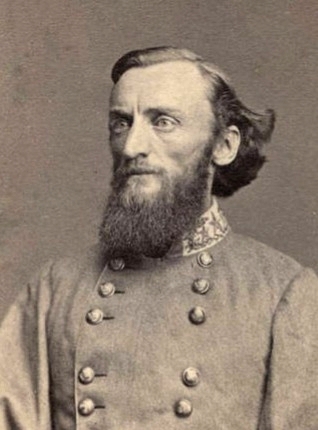
John Sappington Marmaduke was an American politician and soldier. He was the 25th governor of Missouri from 1885 until his death in 1887. During the American Civil War, he was a senior officer of the Confederate States Army who commanded cavalry in the Trans-Mississippi Theater.

Joseph Rogers Underwood was a lawyer, judge, United States Representative and Senator from Kentucky.
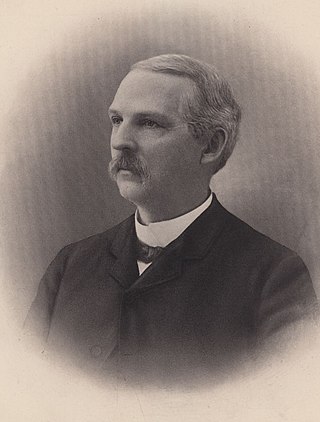
Sidney Clarke was a U.S. Representative from Kansas, a Kansas state speaker of the house, and an Oklahoma territorial legislator. He was a part of the Oklahoma statehood movement.
USS Sidney C. Jones was a schooner that served in the Union Navy during the American Civil War. Built in East Haddam, Connecticut, and launched in April 1856, Sidney C. Jones was intended to be used on trade routes. In October 1861, she was purchased by the Union Navy for military service. Originally intended for service on the Union blockade, she was later converted into a mortar schooner and was armed with a mortar and four other cannons. In April 1862, she participated in the bombardment of Confederate positions at Fort Jackson and Fort St. Philip. During July, she ran aground while part of a force bombarding Vicksburg, Mississippi, and was blown up by her crew to prevent capture on July 15.
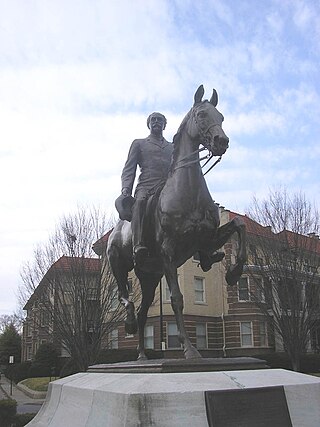
The John B. Castleman Monument, within the Cherokee Triangle of Louisville, Kentucky, was unveiled on November 8, 1913. The model, selected from a competition to which numerous sculptors contributed, was designed by R. Hinton Perry of New York. The statue was erected to honor John Breckinridge Castleman at a cost of $15,000 by popular subscription from city, state, and other commonwealths. The statue is made of bronze, and rests on a granite pedestal. It stands 15-feet high, with a base of 12×20 feet. The monument was placed on the National Register of Historic Places on July 17, 1997, as part of the Civil War Monuments of Kentucky MPS. There have been attempts to remove the statue since January 2019 due to the fact that Castleman was a Major of the Confederate army. The monument was removed on June 8, 2020, and is pending cleaning and relocation to Castleman's burial site.

James Murrell Shackelford was a lawyer, judge, and general in the Union Army during the American Civil War. He has the distinction of having captured Confederate cavalry commander John Hunt Morgan in mid-1863, effectively ending "Morgan's Raid".
Events from the year 1818 in the United States.
Confederate monuments and memorials in the United States include public displays and symbols of the Confederate States of America (CSA), Confederate leaders, or Confederate soldiers of the American Civil War. Many monuments and memorials have been or will be removed under great controversy. Part of the commemoration of the American Civil War, these symbols include monuments and statues, flags, holidays and other observances, and the names of schools, roads, parks, bridges, buildings, counties, cities, lakes, dams, military bases, and other public structures. In a December 2018 special report, Smithsonian Magazine stated, "over the past ten years, taxpayers have directed at least $40 million to Confederate monuments—statues, homes, parks, museums, libraries, and cemeteries—and to Confederate heritage organizations."

David Holt is an American attorney, businessman and Republican politician who is the 38th mayor of Oklahoma City and dean of the Oklahoma City University School of Law. He is a member of the Osage Nation. He served in the Oklahoma Senate from 2010 to 2018, eventually as majority whip.
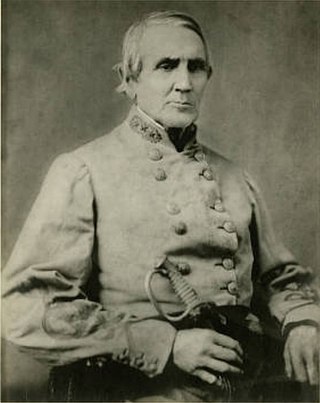
Alfred Eugene Jackson was a Confederate States Army brigadier general during the American Civil War. Before the war, he was a farmer, produce wholesaler, miller, manufacturer and transporter of goods by wagon and boat. After the war, he was a tenant farmer in Virginia until he regained some of his property in Tennessee. Jackson owned 20 slaves.

Whit M. Grant was an American politician who served as the 15th Mayor of Oklahoma City between June 8, 1911, and April 13, 1915.

William James Gault was an American politician who served in the Oklahoma Territorial Legislature, as Mayor of El Dorado, Kansas, in the 1870s, and as Mayor of Oklahoma City from 1890 to 1892.
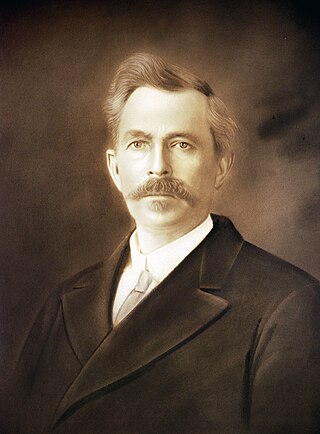
Nelson Button was an American politician who was a member of the original appointed Oklahoma City board of trustees, one of the first elected Oklahoma City Councilors, and as Mayor of Oklahoma City between 1894 and 1896.
















